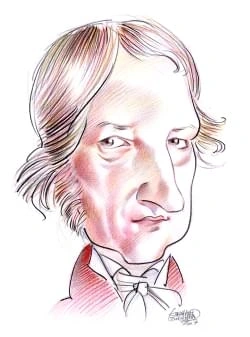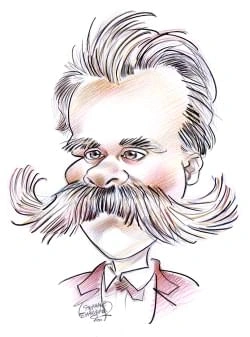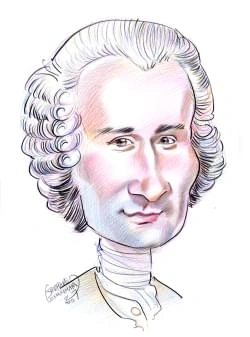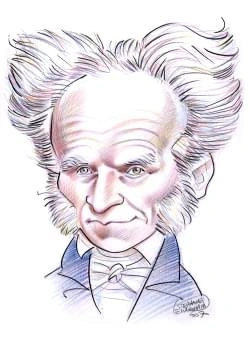549 résultats pour "geography"
-
Geography - geography.
A Collecting Data Geographers may collect data in the field or from secondary sources, such as censuses, statistical surveys, maps, and photographs. Advances made since World War II(1939-1945) in the use of aerial photography, including the use of special films, and in techniques for obtaining three-dimensional views of the landscape from the air haveenabled geographers to perform more detailed studies of the earth and its resources ( see Aerial Survey). Geographers also have made use of radar...
-
Geography - Geography.
Geographers have developed a standard pattern of map symbols for identifying such cultural features as homes, factories, and churches; dams, bridges, and tunnels;railways, highways, and travel routes; and mines, farms, and grazing lands. C Analyzing Geographic Information Techniques that use mathematics or statistics to analyze data are known as quantitative methods. The use of quantitative methods enables geographers to treat a largeamount of data and a large number of variables in an objectiv...
-
Nova Scotia - Geography.
summer. Nova Scotia receives an average of more than 1,140 mm (45 in) of rain annually, with the Atlantic shore receiving 1,400 mm (55 in) or more. Most of the provincereceives about 1,900 mm (about 70 in) of snow, and considerable winter precipitation comes in the form of rain or ice storms. The average temperature in January, thecoldest month, is generally about -4°C (about 25°F) near the coast and somewhat colder toward the interior. The average temperature in July, the hottest month, isabout...
-
Maine - geography.
temperatures range from 17° to 21°C (62° to 70°F) with the southern interior being the warmest and the east coast and north the coolest. However, daytime summertemperatures may reach the lower 30°s C (lower 90°s F), and temperatures in winter have fallen as low as -44°C (-48°F) in the interior. D2 Precipitation Precipitation (rainfall and snowfall) in Maine is evenly distributed throughout the year. Most areas receive from 860 to 1,020 mm (34 to 40 in) yearly, although parts ofthe coast are som...
- Continent - geography.
-
Montréal - geography.
Place Jacques-Cartier, MontréalPlace Jacques-Cartier is named for the French explorer who was one of the first Europeans to venture into Canada in the 16thcentury. It is a popular spot in the city of Montréal, Québec’s largest city.R.E. Murowchick/Photo Researchers, Inc. French influence lasted for a time after the British conquest of 1760, as shown by some late 18th-century houses. British influence came to prevail, however, and most ofOld Montréal is in fact a Victorian Style city, probably th...
-
Madrid - geography.
Madrid’s Plaza MayorBuilt in the early 17th century, the Plaza Mayor was used for a variety of activities, including bullfights, executions during theInquisition, and festivals. Today it is one of Madrid’s main tourist attractions.Cesar Lucas/The Image Bank The traditional heart of Madrid is an area 3.9 sq km (1.5 sq mi). In 1656 King Philip IV had a city wall built around the area. Over the next 200 years the city grew throughconstruction of taller buildings and the use of open land within the...
-
North America - Geography.
D Climate Although North America has considerable climatic variety, five principal climatic regions can be identified. The northern two-thirds of Canada and Alaska, as well as all ofGreenland, have subarctic and arctic climates, in which long, dark, bitterly cold winters alternate with brief, mild summers. Most of the region, which receives relativelylittle precipitation, is covered with snow and ice during much of the year. A second climatic region is made up of the eastern two-thirds of the U...
-
-
Missouri - geography.
Saint Francois Mountains, at the eastern end of the crest of the dome. Only in these mountains have the sedimentary rocks been sufficiently eroded away so that theunderlying igneous rocks are exposed. They form the rounded, knoblike peaks of an old mountain range. The peaks project, in isolation or in clusters, between 230 and300 m (750 and 1,000 ft) above the surrounding sedimentary basins. One of these knobs, Taum Sauk Mountain, reaches 540 m (1,772 ft) above sea level and is thehighest point...
-
Africa - Geography.
The highest elevations in Africa are found in the various ranges of East Africa. After Kilimanjaro, the next highest peaks are Mount Kenya (5,199 m/17,057 ft), north ofKilimanjaro in central Kenya; Margherita Peak (5,109 m/ 16,762 ft) in the Ruwenzori Range on the border between Uganda and the Democratic Republic of the Congo(DRC); Ras Dashen (4,620 m/ 15,157 ft) in the Ethiopian Highlands of northern Ethiopia; Mount Meru (4,565 m/ 14,977 ft), close to Kilimanjaro in Tanzania; and MountElgon (4,...
-
Northwest Territories - Geography.
million years ago by the severe bending (folding) and faulting (breaking) of sedimentary rock that was once part of the Interior Plains. During the Wisconsin Ice Age,alpine glaciers covered the Cordillera, and the movement of the glaciers created razor-sharp peaks and ridges in these mountains. The moving glaciers also createdbroad U-shaped valleys. To the east of the Interior Plains, the ancient rocks of the Canadian Shield are exposed at the Earth’s surface, resulting in a rough, rolling terra...
- Guam - geography.
-
Austin - geography.
Mexico, and Canada. IV POINTS OF INTEREST Among Austin’s points of interest are the State Capitol Building, constructed of Texas pink granite between 1882 and 1888, and the Governor’s Mansion (1856). Severalbuildings reflect Austin’s early architecture, including the French Legation (1841), the residence of the French ambassador to the Republic of Texas, which existed from 1836until 1845; and the Driskill Hotel. Austin is home to the largest colony of urban bats in North America. Between April...
-
Baltimore - geography.
ranging collections. The Lillie Carroll Jackson Museum honors the civil rights leader who was president of Baltimore’s National Association for the Advancement of ColoredPeople (NAACP) chapter from 1935 to 1970. Also of note are the Baltimore Symphony Orchestra and the Baltimore Opera Company. VII HISTORY Before European settlement, the site of Baltimore was inhabited by a Native American people known as the Susquehannock. The area was explored by English soldier JohnSmith in 1608 and was settl...
-
Mountain - geography.
B Erosion Rock on the surface of the earth is constantly exposed to erosion. Because rocks of different composition resist erosion differently, areas of relatively hard rock may standhigh above areas of softer, more easily eroded rock. Mountains resulting from this erosive sculpturing of the land may be linear in appearance if the resistant rock is theupturned edge of a sedimentary rock unit, flat-topped buttes or mesas if the harder rock is a flat-lying unit, or complex and irregular ranges if...
-
Minneapolis - geography.
into a ten-block shopping center, known as Nicollet Mall, reserved for pedestrians and public transportation; at one end is Gateway Center, a complex that includes severalhigh-rise government and office buildings. Pedestrians may also cross from building to building using skyways, glass-enclosed bridges that cross many downtown streets.The Mall of America, the largest retail and entertainment complex in the United States, is in nearby Bloomington. V EDUCATIONAL AND CULTURAL INSTITUTIONS Weisman...
-
-
Fredericton - geography.
VI HISTORY The indigenous people known as the Maliseet used the site of Fredericton as a campsite and burial ground before Europeans discovered the area. In the 17th century theybecame partners with the French in the fur trade. Pierre de Joibert, a Frenchman, received several land grants along the St. John River in 1676, but the first importantsettlement in the area was not completed until 1692. Joseph Robineau de Villebon and other settlers built Fort St. Joseph, also known as Fort Nashwaak, a...
-
Desert - geography.
from the rain shadow produced by the Sierra Nevada. Other desert areas in the interiors of some continents have formed because the prevailing winds are far removed from large bodies of water and have lost much of theirmoisture by the time they reach those regions. Such deserts are the Gobi and Turkistan of Eurasia. Gobi DesertThe largest desert in Asia, the Gobi straddles the border between Mongolia and China. It contains a series of basins that are dividedby low, flat-topped ranges and isolated...
-
Edmonton - geography.
States airlines. Edmonton has a light-rail transit (LRT) system, which was the first of its kind in Canada, as well as an international airport and three smaller, special-purpose airports. V GOVERNMENT Seventeen separate cities, towns, and counties make up Edmonton’s metropolitan area. Each has its own municipal government, with an elected mayor or reeve andcouncil. In the city of Edmonton, the largest municipality, elections are held every three years for a mayor and for 12 councillors who rep...
-
Regina - geography.
other welfare agencies, especially in the inner city where indigenous residents are concentrated. Rates of drug and alcohol addiction and violent crime are high. Theseproblems are serious everywhere in western Canada, but the situation has also worsened as a result of government cutbacks: The federal government, which hasjurisdiction over Canada’s indigenous population, no longer gives aid to those who have left their reserves to live in cities. VI HISTORY Southern Saskatchewan was once populat...
-
Tampa - geography.
tennis. V ECONOMY Since 1980 metropolitan Tampa has become the foremost banking, commercial, and services center in the western part of the Florida Peninsula. The city is home to manyhigh-technology companies including biomedical and information technology firms and manufacturers of medical products. Large new office complexes have been built nearBrandon along interstates 75 and 4 in the eastern suburbs and most importantly at Westshore adjacent to Tampa International Airport in the west; downt...
-
Winnipeg - geography.
city of the province. The city is also the site of the University of Winnipeg.Tom McHugh/Photo Researchers, Inc. Winnipeg grew up around the district called The Forks, at the river junction. For many years this historic site was covered by railroad yards, but in recent years it has beenredeveloped as a heritage park and recreation center. Winnipeg also has an impressive collection of pre-1914 buildings, especially in the Exchange District, with itswarehouses and office blocks. Old Market Square,...
-
Valley - geography.
B Longitudinal Profile A graph of the slope of a river channel at each point along its course is called a longitudinal profile . In most cases, the slope of a river becomes less steep as it flows from its headwaters to the ocean. Slopes as high as 200 m/km (1000 ft/mi) can be found in mountainous terrain, but slopes of about 2 m/km (10 ft/mi) are more typical in themiddle section of such valleys. Slopes as low as 2 cm/km (1 in/mi) can be found in rivers close to the ocean. In most rivers there...
-
Portland - geography.
In the 19th century Portland had large Chinese, Scandinavian, and Italian immigrant communities. Today, however, little remains of these early communities, and the cityhas relatively small minority populations. According to the 2000 census, whites made up 77.9 percent of the population, blacks 6.6 percent, Asians 6.3 percent, NativeAmericans 1.1 percent, and Native Hawaiians and other Pacific Islanders 0.4 percent. People of mixed heritage or not reporting race were 7.7 percent of the population...
-
-
Cincinnati - geography.
building is the library of the Cincinnati Historical Society. Eden Park is the location of the Cincinnati Art Museum, which contains among its many collections a number ofpaintings by American and European masters. The birthplace and early home of the 27th president of the United States is preserved at the William Howard Taft NationalHistoric Site. Closer to downtown is the Taft Museum. Located in the Taft family’s home, it has an outstanding art collection assembled by Charles P. and Annie Taft...
-
Nashville - geography.
The metropolitan area has 10,549.3 sq km (4,073.1 sq mi). The important cities and towns in the metropolitan region include Franklin, site of a major battle of theAmerican Civil War (1861-1865), Murfreesboro, Gallatin, Lebanon, and Springfield. Nashville’s suburbs also have spread into adjacent counties in recent years, particularlyWilliamson County to the south. Nashville’s downtown is located on high, limestone bluffs overlooking the Cumberland River, with four bridges connecting the east and...
-
Denver - geography.
percent of Denver’s population, blacks 11.1 percent, Asians 2.8 percent, Native Americans 1.3 percent, and Native Hawaiians and other Pacific Islanders 0.1 percent. Peopleof mixed heritage or not reporting race made up 19.3 percent of the population. Hispanics, who may be of any race, were 31.7 percent of the people. In 2006, Denver'spopulation was estimated at 566,974. IV EDUCATION AND CULTURE Since the very beginning of Colorado’s settlement, Denver has been the region’s thriving cultural hub...
-
Atlanta - geography.
Martin Luther King, Jr., SiteThis Victorian home, the birthplace of Martin Luther King, Jr., is part of the Martin Luther King, Jr., National Historic Site in Atlanta,Georgia. The site also includes King’s gravesite and Ebenezer Baptist Church where he was pastor.Bob Krist/Corbis Notable structures and sites of interest in downtown Atlanta include the State Capitol (1889); Underground Atlanta, a subterranean marketplace with shops, bars, and cafes;City Hall (1930); and the Peachtree Center busin...
-
Bangkok - geography.
Shipping on the Chao PhrayaThe Chao Phraya River has long been an important transportation artery for Thailand. The river connects the agricultural heartland ofcentral Thailand with the capital, Bangkok, shown here. The port of Bangkok, with its convenient location near the Gulf of Thailand, isthe country’s largest port and handles most of its international trade.Georg Gerster/Photo Researchers, Inc. Government is the largest single employer in Bangkok, but the number of jobs in commerce, constr...
-
Kolkata - geography.
Other places of interest in Kolkata are the fashionable Jawaharlal Nehru (formerly Chowringhee) Road, the city’s main thoroughfare; the Raj Bhavan (1802; formerly calledthe Government House), the state governor’s residence; the Indian Museum (1875), which contains noted displays on archaeology and natural history; and the BirlaIndustrial and Technological Museum. The Botanical Gardens (1786) in Hāora (or Howrah), Kolkata’s twin city, features many tropical plants in addition to a famous banyantr...
-
Indianapolis - geography.
nation to handle multiple railroad lines (thus the name “union”). Ringing the Mile Square are a number of historic districts such as Woodruff Place and Lockerbie Square. To the immediate northwest of downtown is Indiana Avenue, thehistoric center of the city’s black population. Some 6 km (4 mi) due north of Monument Circle is the North Meridian Street Historic District, a stretch of mansions built in the1920s and 1930s, including the Governor’s Residence. The district ends at the Central Canal,...
-
Yangtze - geography.
Yangtze Gorges, ChinaThe Yangtze Gorges, also known as the Three Gorges, once drew many tourists with their scenic beauty. However, the Three GorgesDam that was constructed in the early 21st century raised the level of the Yangtze River upstream, forming a deep reservoir thatflooded the gorges.Dean Conger/Corbis The Yangtze originates in the mountains of southwestern Qinghai Province, located in the northern Tibetan Plateau. The river has three headwaters, the highest of whichdescends from an el...
-
-
Houston - geography.
Medical Research in HoustonThe city of Houston in southeastern Texas is home to the Texas Medical Center, a complex of more than 40 medical institutions. Inthis Medical Center laboratory, a scientist operates a DNA synthesizer in research aimed at developing a vaccine to protect againstHIV.Hank Morgan-Science Source/Photo Researchers, Inc. Situated near major petroleum and natural-gas fields, Houston is the center of the national petroleum industry. The metropolitan region leads the nation in pe...
-
Milwaukee - geography.
Milwaukee Museum of ArtThe Quadracci Pavilion, a dynamic addition to the Milwaukee Museum of Art in Wisconsin, opened in 2001. Designed by Spanisharchitect Santiago Calatrava, it features a 27-m (90-ft) high entrance hall enclosed by a sunscreen that can be raised or lowered. It isthe first building in the United States to be designed by Calatrava, who came to international attention after designing a breathtakingbridge for Expo '92, a world’s fair held in Seville, Spain, in 1992.Joseph Sohm; Vi...
-
?stanbul - geography.
Blue Mosque, İstanbulThe Blue Mosque in İstanbul, Turkey, was inaugurated in 1616 by Sultan Ahmet I, and was built by Mehmet Aga, a student of thefamous Ottoman architect, Sinan. It is known as the Blue Mosque because of the exquisite blue Iznik tiles that cover the interiorwalls. The mosque’s serene courtyard is completely enclosed by a covered arcade.SuperStock Across the Golden Horn from Stambul is Galata, a business district with shops, restaurants, and the city’s main port. Galata is locat...
-
River - geography.
In very large rivers, the water comes from rain that may have fallen as far as 6,000 km (4,000 mi) away. During the journey through rills and streams, the water’s flowmay erode and deposit sediment in the river’s channel and on its floodplain ( see Erosion; Deposit). The biggest rivers usually carry the largest amount of sediment. Yet some of the largest rivers may carry very little sediment because the watershed may not have a lot of sediment. A river carries the most sediment when the flow is...
-
Pittsburgh - geography.
identity, such as Bloomfield (Italian), the South Side and Polish Hill (Polish), and Squirrel Hill (Jewish). The eastern neighborhoods of Point Breeze, Shadyside, and SquirrelHill are attractive city living areas, while other sections of the city afford views of the rivers and the Golden Triangle from houses constructed on steep slopes. Pittsburgh’s black population began to arrive far back in the city’s history, but its biggest growth came in the first half of the 20th century largely through m...
-
Toronto - geography.
to arrive in the Toronto CMA, most conspicuously from Hong Kong. People of Chinese origin accounted for over 9 percent of the city’s population at the 2001 census.Foreign-born residents constitute 44 percent of the population, the highest metropolitan percentage on the North American continent. The ethnic breakdown of metropolitanToronto in the 2001 census included Canadian, 18.5 percent; English, 16.9 percent; Scottish, 11.1 percent; Irish, 10.5 percent; Chinese, 9.4 percent; Italian, 9.2 perce...
- Continent - Geography.
-
Jerusalem - geography.
The population of Jerusalem is divided along lines of ethnicity, religion, and nationality; the primary division is between the Jewish Israeli majority (70 percent) and thePalestinian Arab minority (30 percent). Further divisions exist within both of these groups. The Jewish population has a variety of communities, some based on degree ofreligious observance. Many strictly Orthodox Jews are concentrated in the Mea She’arim religious neighborhood. In the Palestinian population, distinctions can b...
-
-
Honolulu - geography.
Much of Honolulu’s growth and development has concentrated along the southern coast of Oahu. This area is framed to the east by the remnants of a large extinct volcanoknown as Diamond Head and includes Waikiki, located west of Diamond Head; the downtown area, situated near Honolulu Harbor; Honolulu International Airport; andnewer communities in the western part of the island. Two parallel mountain ranges of volcanic origin, the Koolau and Waianae mountains, run north to south across much ofthe i...
-
Montréal - geography.
requires children of immigrants to be educated in French. As a result, French-language schools became increasingly multiethnic. With four universities, Montréal is one of the leading centers of higher education in Canada. There are two English-language institutions: McGill University (1821) andConcordia University (1974). Their French-language counterparts are the Université de Montréal (1876) and the University of Québec at Montréal (1969). Both private andstate universities are funded by the p...
-
Map - geography.
Relief MapRelief maps are three-dimensional models of the terrain in an area; on them, color and scale are used to indicate geographicalfeatures rather than simply to delineate political boundaries. Because of this feature, relief maps are extensively used in engineeringand the military. This map shows portions of Alaska and northwestern Canada.United States Geological Survey Among the most important of the special-purpose maps are hydrographic and aviation charts. Hydrographic charts are used f...
-
Seattle - geography.
Queen Anne Hill, north of downtown, was long isolated by its steep ascent but emerged as a fashionable residential area at the close of the 19th century. North of QueenAnne Hill and across the Lake Washington Ship Canal, Ballard was originally settled by Scandinavian immigrants. Annexed to Seattle in 1907, Ballard today is a residentialneighborhood with a strong Nordic heritage. To the east from Ballard along the north side of the Ship Canal, the neighborhoods of Fremont, Wallingford, and the Un...
-
Map - Geography.
Often only southeast slopes are hachured or shaded, giving somewhat the effect of a bird's-eye view of the area illuminated by light from the northwest. Shadings orcarefully drawn hachures, neither of which give elevations, are more easily interpreted than contour lines and are sometimes used in conjunction with them for greaterclarity. IV MAP PROJECTIONS For the representation of the entire surface of the earth without any kind of distortion, a map must have a spherical surface; a map of this...
-
Montréal - geography.
percent), and Eastern Orthodox (2.8 percent) religions. Another 5.4 percent claim no religious affiliation. IV EDUCATION AND CULTURE Montréal has a large number of private schools, most of them partially funded by the province. Like the rest of Québec province, Montréal has two public schoolsystems, one for French speakers and one for English speakers. The Charter of the French Language (1977), known as Bill 101, restricts access to English-languageschools and requires children of immigrants t...
-
Montréal - Geography.
percent), and Eastern Orthodox (2.8 percent) religions. Another 5.4 percent claim no religious affiliation. IV EDUCATION AND CULTURE Montréal has a large number of private schools, most of them partially funded by the province. Like the rest of Québec province, Montréal has two public schoolsystems, one for French speakers and one for English speakers. The Charter of the French Language (1977), known as Bill 101, restricts access to English-languageschools and requires children of immigrants t...
-
Europe - geography.
movement of a segment of the Earth’s crust against the stable shield during the Caledonian orogeny (about 500 to 395 million years ago) raised the mountains of Ireland,Wales, Scotland, and western Norway. Subsequent erosion has rounded and worn down these mountains in the British Isles, but the peaks of Norway still reach 2,472 m(8,110 ft). The second major geological region, a belt of sedimentary materials, sweeps in an arc from southwestern France northward and eastward through the Low Countri...
-
-
Asia - geography.
the Himalayas, the world’s highest mountain system. The Pacific Ocean plate drifted westward, scraping along the Eurasian plate and slipping under its coastal edge. This created the islands of Japan, Taiwan, the Kurils, theRyūky ūs, and the Philippines. Southeast Asia lies at the intersection of the Eurasian, Pacific Ocean, and Indian Ocean plates. Over time the contact between these platescreated the mountain ranges of mainland Southeast Asia. The continued slow movement of the plates causes fr...
-
Manitoba - Geography.
E Plant Life Forests cover 66 percent of Manitoba. The main forest area is divided into the boreal forest and the mixed-wood forest. The boreal, or northern, forest containsconiferous (cone-bearing) trees, especially white and black spruce, balsam fir, and jack pine. South of the boreal forest is the mixed-wood forest, which contains conifers as well as such deciduous trees as white birch, aspen, poplar, and Manitoba maple. Prairie land is found in the southwest, where the natural vegetation i...
}})








